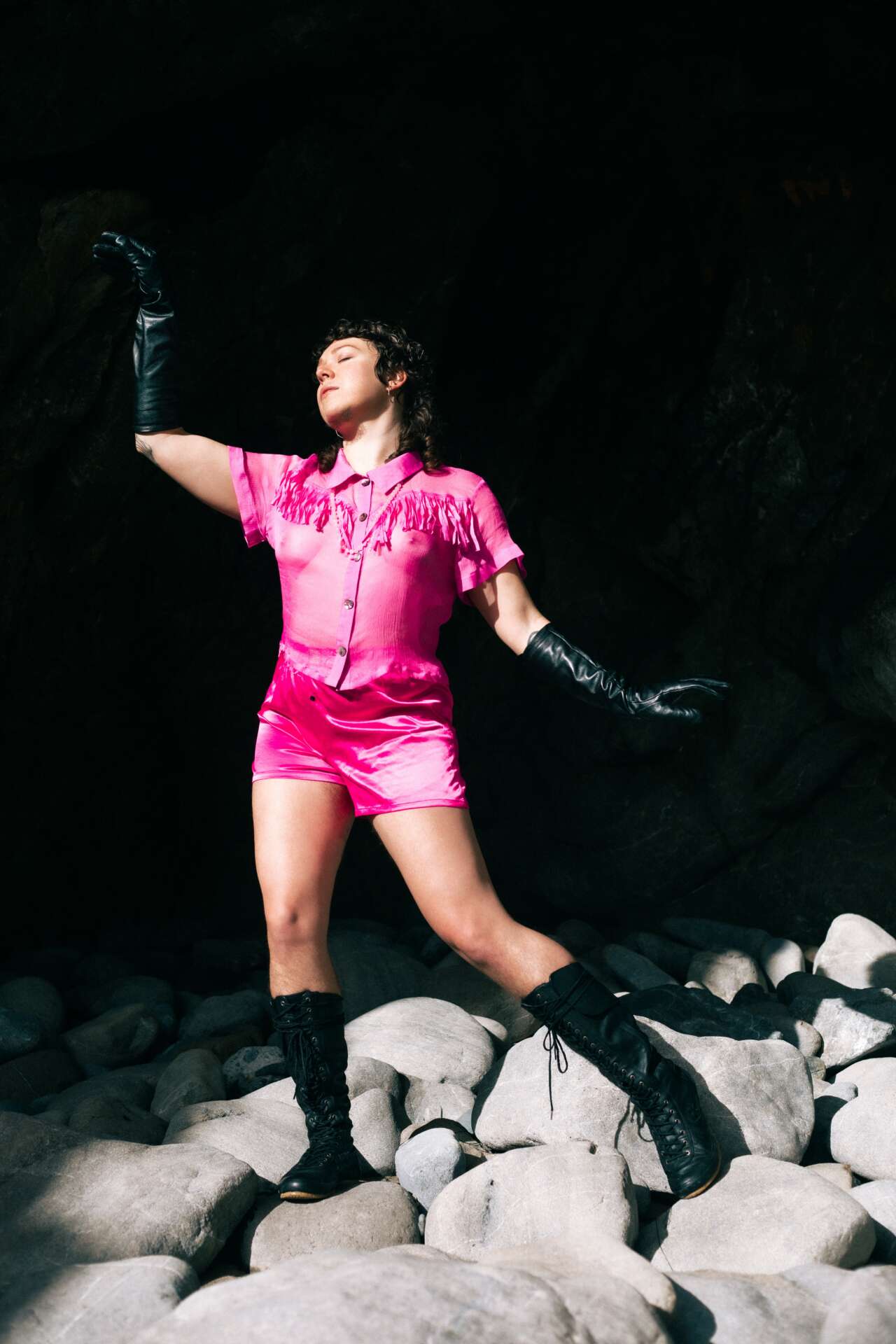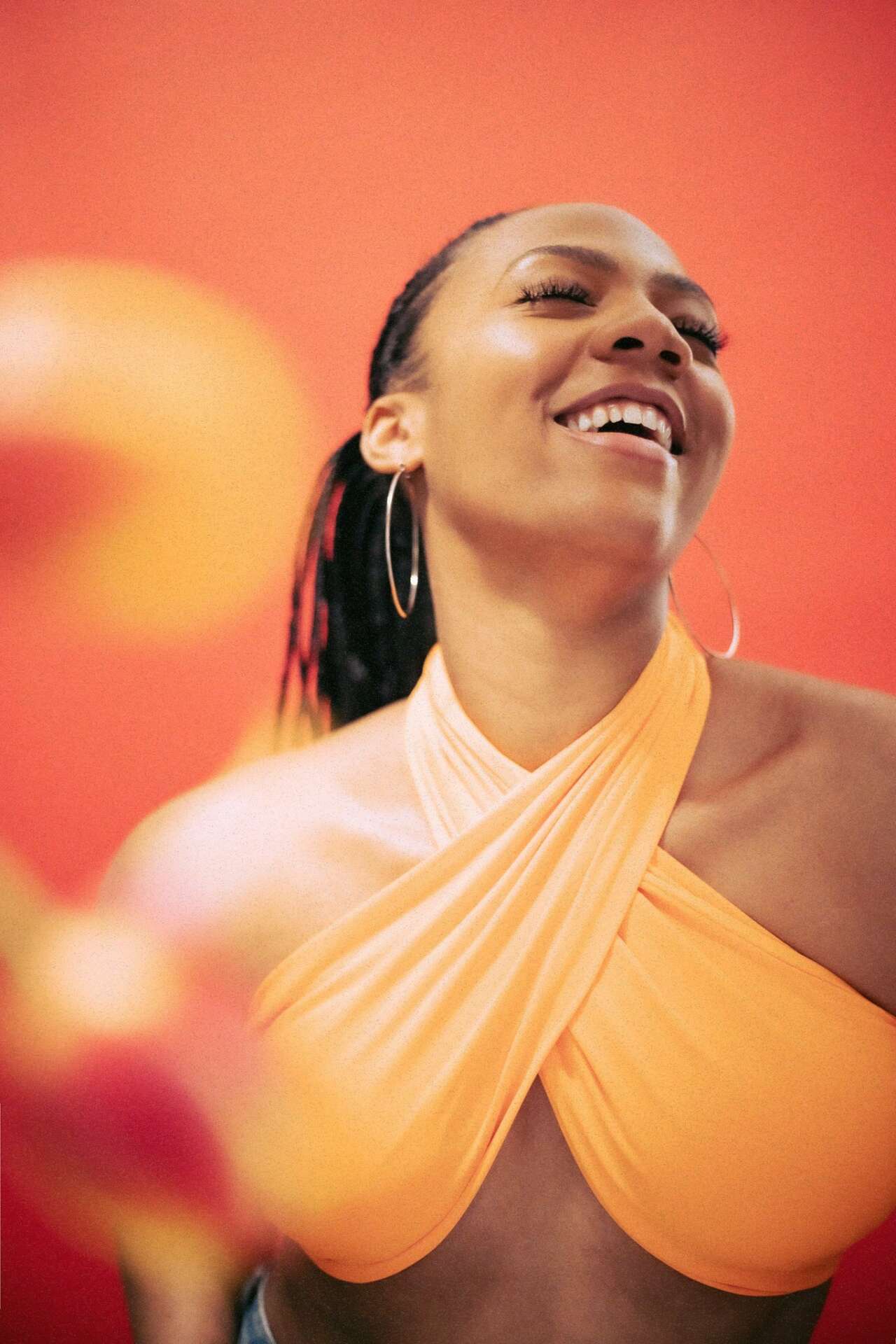We recently connected with Sam Rothermel and have shared our conversation below.
Alright, Sam thanks for taking the time to share your stories and insights with us today. We’d love to hear the backstory behind a risk you’ve taken – whether big or small, walk us through what it was like and how it ultimately turned out.
Three years ago, I gave my personal and professional life the “New York Salute”. Translation: I threw up the middle finger, kept walking, and pretended like I knew where I was going. That’s what your late twenties are supposed to be about, right? The Great Unlearning?
For context, I was working full-time as a host on the digital fitness platform, EQX+ and competing nationally as a bodybuilder in the NPC. I was at the height of the Health and Wellness industry, connecting with people digitally from all around the world, but my body was weaving a different story–– nagging injuries, clinical depression, and a growing sense of unease that I’d created a life I didn’t fit inside of.
Creativity had always been my heartbeat. I grew up devouring Shakespeare, playing music, developing film in the darkroom, getting lost in fantasy books and trying to write them, alongside really *terrible* Avatar: The Last Airbender fanfiction. I started working professionally as an actor when I was fifteen, and yes, I got the BFA at NYU. But when I graduated, I experienced, what my neurodivergent brain now understands as, a very intense period of burnout. And so, I masked and got on the escalator. I hid inside a comfortable, straight-presenting relationship. I got a secure job with benefits. I smiled, nodded, and kept my head down. It was only a matter of time before I developed rage issues, or y’know, cracked my life all the way open so I could finally start living it.
And living, I did. I finally came out to my parents as Queer, and then as polyamorous, the latter of which they had a LOT more questions about. I became a full-time, freelance artist. I started a creative portrait and branding photography business that markets to other multi-hyphenates and entrepreneurs. I got back on set as an actor, and on stage, and in the booth. I jumped and trusted the net would find me, if I finally loved myself enough to bet on her.


Awesome – so before we get into the rest of our questions, can you briefly introduce yourself to our readers.
I am a Queer, multi-hyphenate photographer, actor, and writer based out of New York. I hold a BFA in Acting and a BA in English from New York University.
Three years ago, I started a creative portrait and branding photography business, In-Motion Photo. I curate individualized, immersive shoots for multi-hyphenate artists, entrepreneurs and small businesses looking to capture the moments that move them. Being a photographer has enabled me the unique opportunity to combine years of experience: an eye for art direction from my time as an editorial stylist and photography assistant, a knowledge of frame from my work as a professional actor and model, and an ability to coach, empathetically, from almost a decade in the Health + Wellness industry. Coming to terms with, and accepting, my own non-linear history has been an incredible asset to understanding my clients.
Queerness is at the heart of my work––be that on screen, behind the lens, or on the page. And I’m referring to Bell Hooks’ definition that Queerness is not about “being who you’re having sex with (that can be a dimension of it); but Queer as being about the self that is at odds with everything around it and that has to invent and create and find a place to speak and to thrive and to live”. As someone with intersecting identities, I have often navigated the professional artistic sphere by asking “Can I take up space in this particular environment without being seen as ‘too much?’ and I knew that I was not alone in that feeling. In-Motion was brought about from the need to: create safely, vulnerably, playfully; for intersectionality in storytelling; for EVERY client––regardless of race, class, gender, or sexual orientation–– to recognize that their most unadulterated self can be celebrated in front of the camera and not just tolerated.
For this reason, every client starts out as a consultation. I spend an hour on Zoom getting to know them. I ask personal questions. I want to know where they’re coming from in order to shape images around where they’re going. I listen––not to respond, but to understand. And, oh baby, do I take notes! From here, I moodboard, creating a visual language that I share as a document with my clients. It functions as a joint collaborative space where we can mine color, reference imagery, and music for photoshoot ideas. By the time the shoot comes, all my clients need to focus on is bringing their special sauce to the party and staying present with me along the way.
I have been lucky enough to have my work with the Grammy winning band, Dream Theater, featured in Young Guitar Magazine, my promo shots displayed Off-Broadway at The Flea Theater, and published in Playbill, Variety, BroadwayWorld, and Business Insider.


For you, what’s the most rewarding aspect of being a creative?
For me, autonomy is essential as a freelance creative––not only in the freedom to set my own schedule, but in learning how to advocate for myself. In transferring from the corporate world, learning how to have conversations about setting my own rate, deciding what gigs align with the vision for my business, and best practices for work-life balance were areas that felt out of my scope. When I started generating leads and bringing on new clients, I learned to listen to my gut. Those strong “UH-HUH”s and “NUH-UH”s were powerful messages about the kind of creative journey I was trying to lead. I became hyper-aware of the invisible labor that prospective clients don’t see––the location scouting, the light tests, the continued education, the equipment, the hours of culling and editing, the social media marketing. It adds up. I learned just how valuable my time is because it’s finite. The more I began to honor that strong internal voice, the more I advocated for myself, the easier it became to speak up in, and out of, my professional life. Being an artist, to me, is about telling meaningful stories, and I was only able to do that successfully when my voice was finally strong enough to hear.


In your view, what can society to do to best support artists, creatives and a thriving creative ecosystem?
Creating more accessible education is one of the best ways we can support artists. I was privileged to attend a public high school with stellar arts educators and access to the tools I needed to foster my creativity. In our theater program, I was exposed early to a diverse range of texts–– from Shakespeare to David Henry Hwang to Ntozake Shange. I harnessed my eye for detail learning how to take photographs on 35mm and developed my own work in the darkroom. The days of access to this kind of public arts education are dwindling. It is becoming an elitist hobby, not an essential part of teaching young people how to express themselves. And artists need to be championed, supported, to be reminded that they have the power to shape perception, and that isn’t something that belongs to a privileged few.


Contact Info:
- Website: www.in-motion-photo.com www.samrothermel.com
- Instagram: @samrothermel @in.motion.photo
Image Credits
Clients in order of uploaded photographs: Phoenix Best Yeena Sung Landon Woodson Alicia Bella Teddy Sanchez Kira Kull Nikita Chaudhry Donovan Mendelovitz


